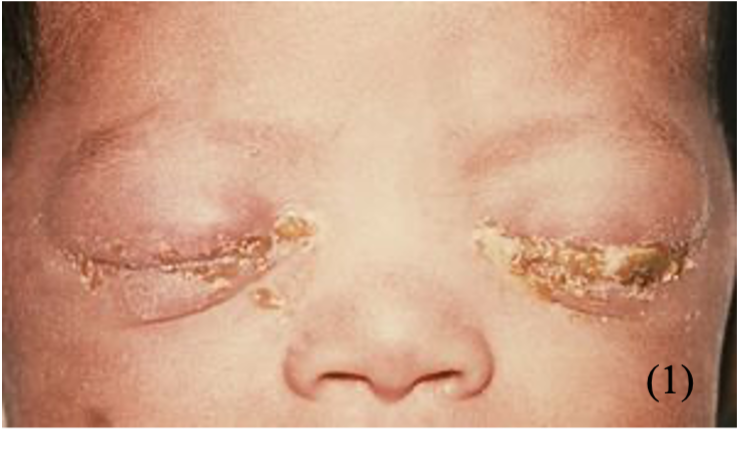Squint (strabismus)
This is an eye condition in which the two eyes are not aligned when looking at an object
– The condition can be present occasionally or permanently, and usually affects one eye
– The problem is that if present during childhood, it can result in amblyopia and loss of depth perception
Types:
i) Concomitant:
– This is where the deviation is the same magnitude regardless of gaze position
– This occurs due to an imbalance in the power of the extraocular muscles of the eye
– Can be convergent (more common) or divergent
ii) Incomitant:
– This is a type where the magnitude varies as the person shifts gaze in different directions
iii) Paralytic:
– This is much rarer which occurs due to paralysis of the extraocular muscles
Complications – Amblyopia
Tests:
– Corneal light reflection test – hold a light source 30cm from the child’s face to see if the light reflects symmetrically on the pupils
– Cover test – This is used to identify the nature of the squint.
– Ask the child to focus on an object and cover one eye
– Look at the uncovered eye to see if it deviates. This shows if there is misalignment between the two eyes
Management:
– Refer to ophthalmology
– Relieve deprivation and correct refractive errors with glasses
– Patch the good eye till vision in lazy eye improves –> this forces the “lazy” eye to work to prevent amblyopia
Congenital Cataract
This is used to describe a clouding of the lens which leads to a decrease in vision
– It covers a broad spectrum of severity, from insignificant to profound visual impairment
– It is important to treat this urgently as failure to treat can lead to amblyopia (lazy eye)
Causes:
– Infections in utero –> rubella, CMV, toxoplasmosis
– Genetic causes –> Down syndrome, Marfan syndrome, Alport syndrome
– May also be idiopathic
Symptoms:
Difficulties in vision, but this is difficult to tell in new-borns
Diagnosis:
Ophthalmoscope shows loss of the red reflex
Management:
Surgical removal of the cataract to avoid amblyopia
Retinoblastoma
This is a malignant proliferation of the immature cells of the retina, which is the most common primary malignant tumour of the eyes seen in young children.
– It does not have a high mortality rate, but children may lose their vision in that eye irreversible
– Half of children have an inherited form of the condition, which is due to a mutation in the tumour suppressor gene Rb on Chr 13
– This is an autosomal dominant mutation and has 90% penetrance
– As both alleles are required to give rise to the condition, if children inherit one faulty allele, then only one other mutation is required to give rise to retinoblastoma
– This is known as the “two-hit model”
– It can also be due to a sporadic mutation
Symptoms:
– Lead to difficulties in vision, but this is difficult to tell in new-borns
– Loss of the red reflex – leukocoria (white pupil)
– Can lead to a squint
Tests:
– Ophthalmoscope shows loss of red reflex
– CT/MRI
Management:
Enucleation of the eye is the mainstay of treatment
Ophthalmia neonatorum/Neonatal conjunctivitis
This refers to conjunctivitis which occurs in the first 28 days of life, usually due to bacterial infection
– It is typically contracted during vaginal delivery due to exposure to bacteria in the birth canal
– If left untreated, neonatal conjunctivitis can lead to blindness
Causes:
– Neisseria gonorrhoea (most common)
– Chlamydia trachomatis
Symptoms:
– These occur within 5d of birth (gonococcal) or 1-2 weeks (chlamydia)
– Pain and tenderness of the eyeball
– Purulent discharge
– Swelling and redness of the eyelid
– If left untreated, can lead to ulceration of the cornea

Tests:
Discharge should be swabbed and gram-stained and cultured
Management :
– Antibiotic ointment into new-born’s eyes to prevent gonococcal ophthalmia
– If baby develops conjunctivitis –> use antibiotic eye drops

